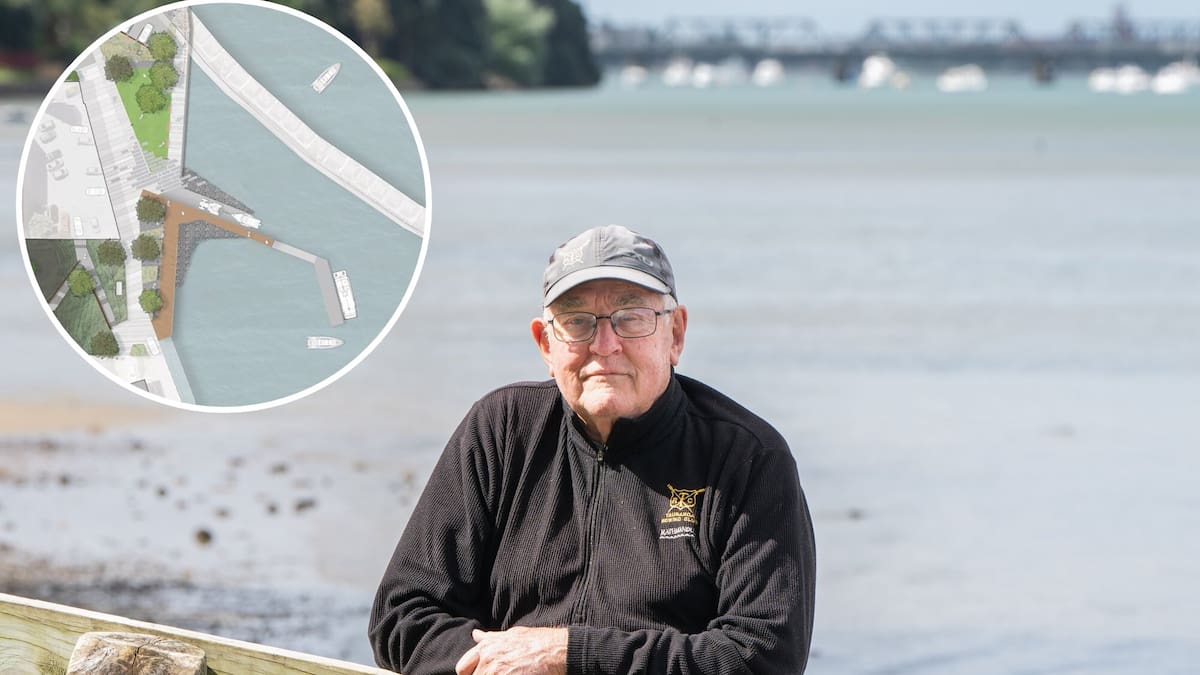The council said the pontoon would reduce the response time in an emergency from two hours to 15 minutes because its equipment and vessels would be in one place, rather than in different parts of the harbour.
However, residents and rowers are concerned it will negatively impact other harbour users.
Tauranga Rowing Club president Neil Chinnery-Brown said if the pontoon was built, the club would no longer be able to use that part of the harbour for its training sessions.
“The harbour is quite exposed and under some weather conditions, the town reach, as this area of harbour is known, is the only possible place to row.
“If it was not available we would not be able to train on days with strong westerly winds.”
He said the pontoon would be in the way on the route rowing back from Tauranga Harbour Bridge to the club at Memorial Park.
Tauranga Rowing Club president Neil Chinnery-Brown. Photo / Brydie Thompson
Rowers train seven days a week and there could be eight to 10 crews out at a time, Chinnery-Brown said.
“We’re always looking for the best water [conditions].”
The club objected to the proposal during consultation, but Chinnery-Brown believed it was a “fait accompli”.
The club believed the pontoon should be part of the Port of Tauranga’s planned expansion or based at Sulphur Point, north of the bridge and closer to where emergency services may be needed, he said.
Greg Taylor lives on The Strand extension and the pontoon will be directly outside his home.
He said The Strand extension was a recreational area used by walkers, workers on their lunch breaks, swimmers, kayakers, boaties and fishermen.
Greg Taylor lives on The Strand extension in Tauranga and is opposed to the planned maritime emergency response facility that would be outside his home. Photo / Alisha Evans
Taylor wanted the council to consult publicly about the pontoon rather than just with affected parties.
“The whole of Tauranga is an affected party, not just the residents that live here.”
The pontoon would be another structure in the harbour and was not needed, in his opinion.
He questioned the council’s expected emergency response time improvement and said the boat’s current location was more appropriate.
The pontoon of the council’s planned Maritime Emergency Response Facility would be outside the homes of residents along The Strand extension. Photo / Alisha Evans
Taylor’s neighbour Ben van der Vlugt worried access to their homes and public areas would be restricted during an emergency.
“During an oil spillage event, our personal access will be detrimentally affected.”
He acknowledged the pontoon would affect his views but emphasised the area was “used by many members of the public”.
“Our understanding was that this area down here would be developed as a recreational area for the public.”
To instead have a “industrial marine facility” was unexpected.
Van der Vlugt said the facility could pose a risk to the harbour and its users if oil or other contaminants got into the water from the council’s equipment.
He believed the council applying to itself for resource consent was like “checking their own homework”.
Council regulatory general manager Reuben Fraser said the facility would enable the council to better protect Tauranga Moana from environmental harm during maritime emergencies.
An aerial impression of the planned maritime emergency response facility. Image / Bay of Plenty Regional Council
The design aimed to minimise impacts on harbour users, he said.
The location was chosen to reduce emergency response times and for its proximity to Regional House and the marine equipment, he said.
Alternative sites considered did not meet the operational requirements for rapid deployment, Fraser said.
In August, the council sought feedback from iwi and hapū, immediate neighbours and affected parties, including Tauranga Rowing Club and the Tauranga Harbour Protection Society.
Further consultation might happen during the resource consent process, Fraser said.
The design and construction plans included provisions to maintain access for residents and businesses, even during emergencies, he said.
“Temporary restrictions may apply for safety but full closures are not anticipated.”
Environmental safeguards were integral to the project’s design, Fraser said. Water would be contained and treated before being discharged into the harbour.
The location for the planned maritime emergency response facility was chosen because it is directly below the regional council offices and would reduce response times in an emergency. Photo / Alisha Evans
Oil-contaminated products would be disposed of at approved facilities elsewhere under hazardous waste protocols, Fraser said.
The resource consent applications would be lodged with Tauranga City Council for land-based parts of the project.
Marine-based activities would be lodged with itself as the regional council.
The council had clear procedures to manage any conflicts of interest when it was the consent authority and the applicant, following the Auditor-General’s good practice principles.
“An independent commissioner is appointed to make the final decision on the application,” Fraser said.
Consent applications were being prepared and if approved, construction was due to begin next year.
Fraser would not provide the estimated cost of the project because it was due to go out for tender, but he said it was budgeted for.
– LDR is local body journalism co-funded by RNZ and NZ On Air.

